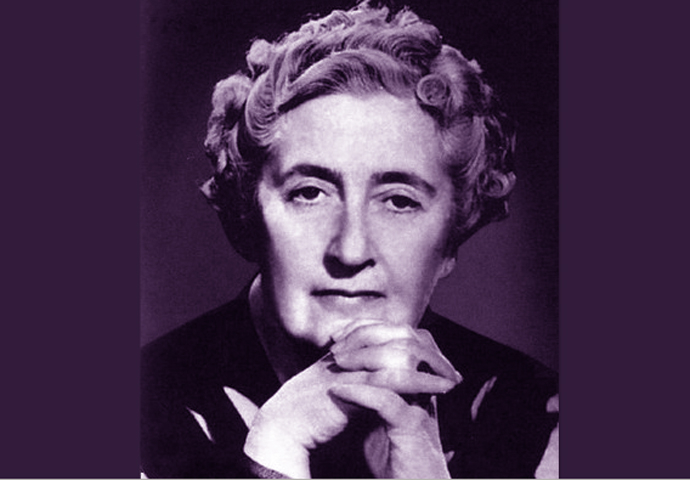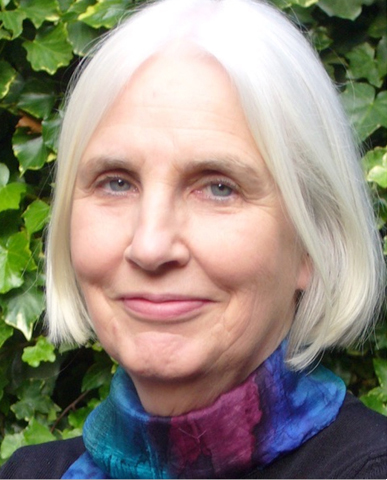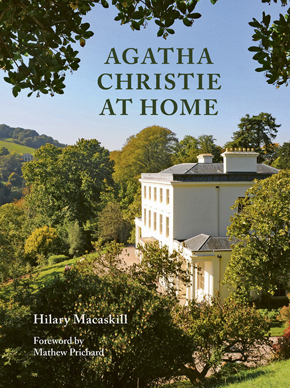Review: Agatha Christie At Home
Barry Forshaw discusses the Queen of Crime with Hilary Macaskill and hears how she was influenced by her various houses
Thursday, 7th September 2023 — By Barry Forshaw

Dame Agatha Christie
WHAT is the source of our continuing fascination with Britain’s premier crime writer, the late Agatha Christie? Hilary Macaskill’s handsome and strikingly illustrated study of the author at home is further proof of the mesmerising effect that the Queen of Crime has on readers and viewers.
Christie was the most celebrated writer of the Golden Age of detective fiction, with an estimated two billion novels sold in over 40 languages.
She was canny enough to appropriate several of Conan Doyle’s Sherlock Holmes concepts for her Belgian detective Hercule Poirot, but while we remain ready to plunge into the fogbound streets of Victorian London, taking the experience seriously, Poirot is customarily played in tongue-in-cheek fashion.
The pleasure of Christie’s work, however, doesn’t really depend on Poirot’s character (or, for that matter, Jane Marple’s); it’s those wonderfully engineered plots that remain as diverting as ever.
There are, of course, those resistant to the socially stratified, never-never land England she nostalgically creates, but Christie was able to take on board social change, albeit peripherally – there is an acknowledgement in later books that real life is lived outside the privileged circle in which the majority of her characters move.
In 1926, she became the subject of her own mystery when she disappeared for 11 days. Actually, it was not that mysterious – her retreat to a hotel in Harrogate appears to have been a desperate response to a crisis in her first marriage; she checked in using the name of her husband’s mistress.
Later, in 1930, she married archaeologist Max Mallowan and spent time every year on digs in the Middle East – which provided inspiration for her novels.
A fascinating aspect of Christie’s life – and one route into an understanding of her personality – is the various homes she loved so much, and journalist, travel writer and Islington resident Hilary Macaskill provides us with the perfect entrée into this area in Agatha Christie at Home. In this newly revised edition of her fascinating book, she takes us into the houses in which Christie lived.
Houses had always fascinated Christie, starting with the dolls’ house she had as a child, and, using a variety of recently discovered images, Hilary investigates this world.
Most important are the houses in Devon, including the country house in Torquay that was Christie’s particular passion when she lived there and the magnificent Greenway, overlooking the River Dart, which she described as “the loveliest place in the world”.
Hilary is a lively conduit into this world, and, as she has demonstrated in similar studies of writers at home, her elegant and evocative prose is the perfect complement to the collection of images here.

Hilary Macaskill
Asking Hilary what she thinks is the basis for the continuing fascination we have with both Christie’s work and life, she replies: “It’s her skill as a gripping and witty storyteller. Agatha was reluctant to give interviews or speeches, so discovery of her lesser-known skills, such as acquiring houses (she once owned eight) or her prowess in surfing, intrigues.
“In my previous books, I took readers into the homes of Daphne du Maurier, Virginia Woolf and Charles Dickens – I’d found that these authors, like Agatha, shared a surprising talent for decorating and DIY, from Daphne’s painstaking restoration of Menabilly (Rebecca’s Manderley) to Agatha and Virginia painting their homes, and Dickens’ passion for wallpaper and keenness on alterations.”
Agatha Christie clearly had a privileged background – does Hilary accept the criticism that the author was out of touch with the lives of ordinary people?
“No – that she is the world’s best-selling author indicates that what matters is the story and the puzzle. I enjoyed identifying the settings that Christie used in her books – the fun was working out which houses of family and friends inspired her, like her sister’s house, Abney Hall, background for The Secret of Chimneys and After the Funeral. The dedication in The Hollow is an apology to friends for using their swimming pool as the crime scene.
“Of course, some of the locations that had been important to the author have been swept away by time. One striking absence is Agatha’s childhood home: though she left Ashfield for her ‘dream house’, Greenway, she was bereft when it was later demolished.”
Finally, if a reader of Hilary’s book wanted to undertake a Christie pilgrimage, what would she recommend as essential stops on the journey?
“I’d suggest they focus on Devon, from Dartmoor to Blackpool Sands; savour Greenway; walk the Agatha Christie Mile in Torquay – and end at Torquay Museum’s unmatchable exhibition.’

• Agatha Christie at Home. By Hilary Macaskill, Pimpernel Press, £30
• Barry Forshaw is the author of Crime Fiction: A Reader’s Guide, published by Oldcastle Books